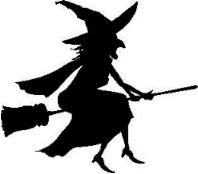
Did You Know?
- Hallowe'en in Scotland

Celtic Origins
The Christian Festival on All Hallows (Saints) Day on 1 November was deliberately set to coincide with the last day of the year in the old Celtic calendar of 31 October. It was celebrated by the Druids as "Samhain" from "Sain" meaning summer and "fuin" meaning "ending" and was regarded as a "Feast of the Dead" when they would sometimes return as evil spirits. There were also ritual fires to ensure that the sun would return the following spring and there is still a lingering belief that children born on Hallowe'en have supernatural gifts.Hallowe'en Traditions in Scotland
In Scotland, Hallowe'en was traditionally associated with witches and bonfires. In the last few hundred years, bonfires have ceased to be part of the celebration of Hallowe'en - they are reserved for "Guy Fawkes" night on 5 November. But other pagan rituals have been perpetuated with traditions such as "dookin' for apples" (removing an apple floating in a basin of water without using your hands, either spearing it with a fork held in your teeth or by biting it). Of course, apples were sacred to the Druids.
Tattie Bogles
Then there are "tattie bogles" (potato scarecrows) or "neep lanterns" (turnip lanterns) made by scooping out a turnip and cutting through the skin to create eyes, nose and mouth. A candle was then placed inside (and turnip was on the menu for days afterwards). The pumpkin serves the same purpose in the USA and these are increasingly found in Scotland in more recent times - they are easier to scoop out! But children who have fun doing this do not realise that they were continuing a tradition of placing skulls on poles round encampments to scare away evil spirits.
In Modern Times
By the end of the 19th century Hallowe'en had become very much a festival for children. Dressing up and going "guising" is a tradition which has lasted to the present day. The original idea was to dress as spirits of the dead but options have widened over the years. When money was tight, dressing up in some old clothes from grandparents was all that was required. But witches (with broomsticks, cloaks and pointed black hats) have always been popular, with blackened faces harping back to the pagan days when the Druids may have smeared their faces with ash from their bonfires. Long before "trick or treat" children went round the houses and had to perform a poem or a song or tell jokes before receiving nuts, apples, sweets (candies). In recent years, concern about child safety has reduced the amount of "guising" and the children who do go out seem to think they should get something without having to do a "party piece".Robert Burns
There is a (long) poem by Robert Burns on Hallowe'en which gives a good description of the traditions which were followed in his day. And of course, the epic poem "Tam O' Shanter" is all about "brownyis and bogillis" and the witchcraft and superstition of those times.
Where else would you like to go in Scotland?

